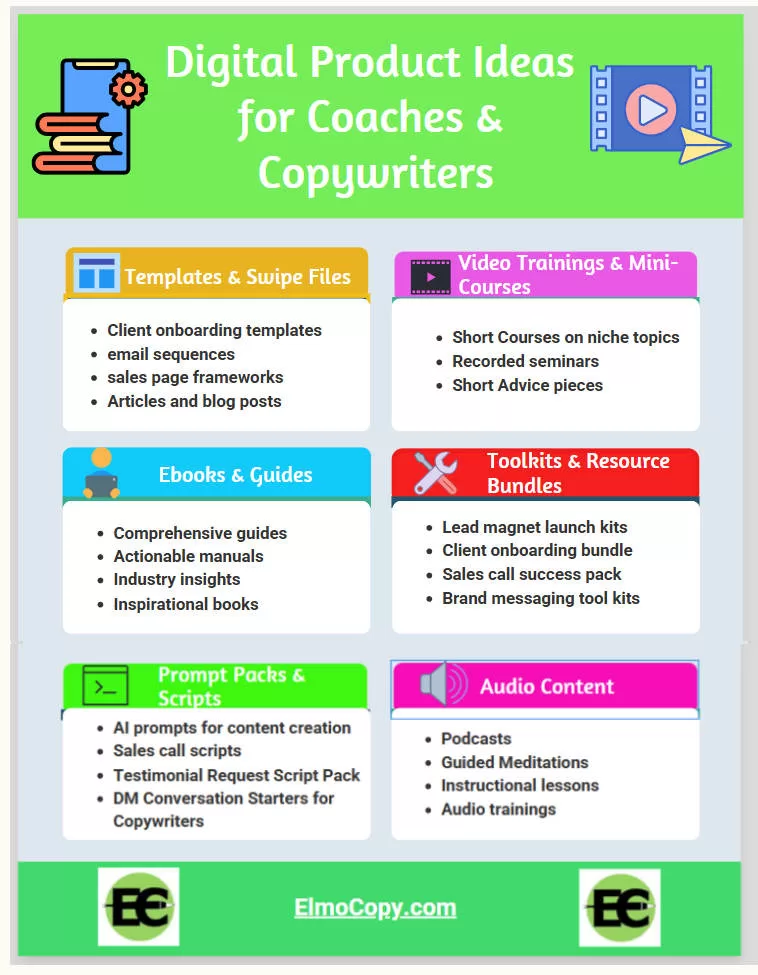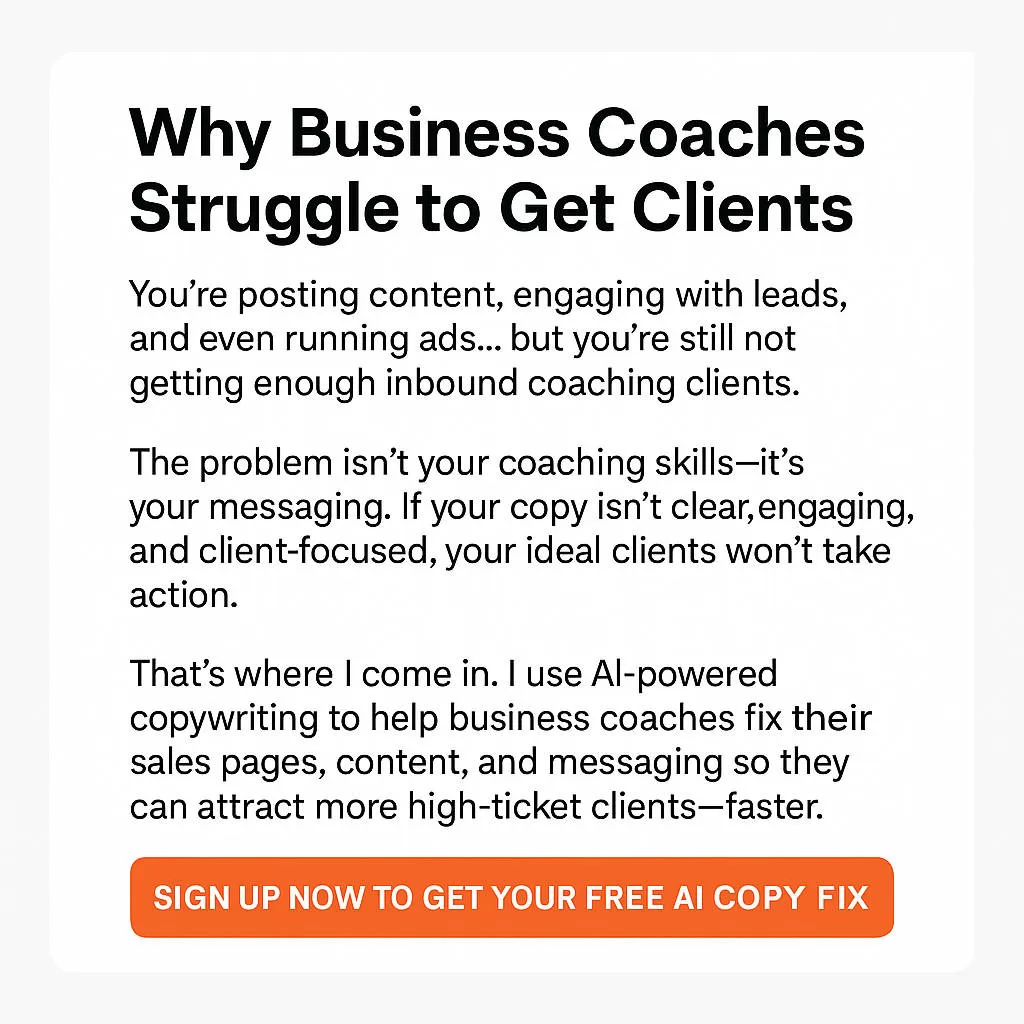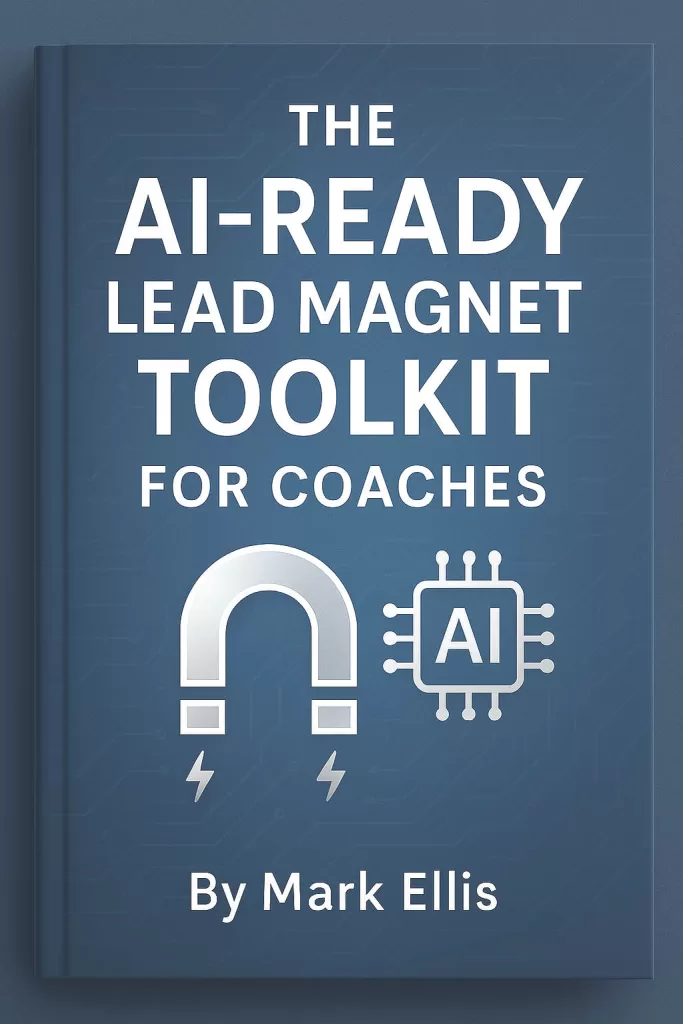Creating digital products is the fastest, easiest way to start making money online right now.
And now that AI’s riding shotgun?
That “someday” dream just got a weekend deadline.
Yep—you can crank out a money-making digital product without burning out, hiring a team, or ugly-crying into your hoodie.
And the best part?
I’m going to walk you through exactly how to do it in this one juicy, no-fluff post. No more sitting on the sidelines. No more “maybe someday.” Just action, momentum, and cash-ready content.
So fire up your keyboard. Pour a strong cup of ambition. And let’s build a digital product that makes money while you nap.
Can you dig it?
I knew you would.
Why I Love Digital Products
Back in 2001, I created my first digital product and made money—without having a clue what the hell I was doing.
The idea hit me after reading an eBook by a guy named Dan Kennedy.
Now, if you don’t know who Dan is, let me clue you in: he’s basically the godfather of direct response marketing. One of the sharpest copywriters to ever slap words on a page. The man has sold more stuff with fewer words than most people do with a megaphone and a parade.
What really lit the fire under me was this line from Dan:
“Why don’t you sit down over the weekend and crank out a digital product to sell or give away?”
I remember thinking, Wait… what?!
You mean I can just make something in a weekend… and sell it? Like, for actual money?
And then came the kicker that changed everything:
“Information products are the quickest and easiest ways to make money on the planet.”
And the wild part? He wasn’t wrong.
Digital products—especially info products—can be created in a few hours. Then, you can turn around and sell that same file over and over again. No inventory, no shipping, no headaches. Just pure, repeatable profit.
Even cooler? If you do it right, you can keep making money from that product for years.
(Dan was right again. Dang it.)
And stick around, because I’m going to show you how to make your profits even bigger—by using free traffic sources to drive sales.
Can it get any better than this?
How I Made and Sold My First Digital Product
If you take away just one thing from this post, let it be this:
Anyone can make money from digital products.
I mean it. I’m living proof.
I’m no tech genius—I’m a jazz trombonist who stumbled into the world of online income. And if I could figure this out back in 2001? So can you.
When I first got the itch to create a digital product, I was fired up. Ready to go.
One small issue though…
I had no idea what to write about.
At the time, I was a band director at a military academy, brand new to the concept of creating and selling digital products.
But one thing I’ve learned? If you want to learn how to do something, just get started.
Like Woody Allen said: “Success is 95% showing up.”
I knew I’d probably mess up. But I figured—what’s the worst that could happen?
I did know enough to follow a few basic marketing rules:
- Pick a focused, money-making niche
- Solve a real problem or deliver a specific benefit
- Make it immediately actionable
So, I started brainstorming.
I racked my brain for a week. Nothing.
How I Found My First Product Idea
And then it happened.
One day, I saw one of my students dressed in full bagpiping gear, standing in front of the main building with his pipes. I asked him what was up.
“Oh, I’ve got a gig—playing for a retired colonel’s wedding anniversary.”
Turns out, this student was making side income playing bagpipes at weddings, anniversaries, church events—you name it.
My curiosity exploded. I started talking to every bagpiper at the academy.
I asked questions, took notes, and quickly realized something:
Bagpiping is a real niche. A tight, profitable one.
There are events. Uniforms. Celtic rock bands. Accessories. Even the bagpipes themselves. And I was surrounded by students and pros making real money from it.
So I thought: Why not create a guide that shows other pipers how to do the same?
Boom. My first digital product was born:
How to Make Money with Your Bagpipes
It took me about 8 hours over a few days to write and format it. I launched it… and over the next year or two, I made around $2,000 from that one little eBook.
Now, you’re thinking: “That’s not a ton of money.”
True. But for 8 hours of work that kept paying me without lifting another finger?
That’s called leverage.
More importantly—it got me in the game.
Once I realized I could do this once, I started doing it again.
And again. Faster each time.
Since then, I’ve created:
- eBooks
- Online courses
- DVD video and audio products
- YouTube demos
- Email courses
- Even physical manuals bundled with DVDs
And here’s the kicker:
You can do the exact same thing.
You don’t need to be an expert in everything.
You just need a niche, a plan, and a weekend.
And I’m going to show you how to make that happen.
Why Coaches and Copywriters Should Embrace Digital Products
If you’re a coach or copywriter and you’re not creating digital products, you’re missing out on easy income.
One of the best things about digital info products? They’re cheap and simple to make.
If you have a laptop and an internet connection, you’re in business. There’s no inventory. No warehouse. No major investment.
And like I mentioned earlier—you don’t need to be a genius to create and sell them.
Coaching and copywriting both run on expertise. You already know what your clients want to learn. You already know what they’ll pay for.
So why keep trading hours for dollars when you could build something once and sell it again and again?
What Kind of Digital Products Can You Create? (Spoiler: More Than You Think)
At this point, you might be wondering:
“Okay, I get it—I need a digital product. But… what the heck would I even make?”
Glad you asked.
Here’s the truth: if you’ve coached a single client, written a halfway-decent email sequence, or helped someone make sense of their message—you’re already sitting on product material.
Seriously.
If you’ve been in the coaching or copywriting game for more than five minutes, you’ve probably got gold hiding in your Google Drive, inbox, or that giant pile of sticky notes next to your desk.
Start digging.
Old client emails? Coaching frameworks? Launch plans?
They’re not clutter—they’re clues.
And when you polish them up into a product, they become income-generating assets.
Quick Hack: No Content Yet? Start a Swipe File
Just getting started and feeling like you’ve got nothing to work with yet?
No problem. Here’s what to do:
Start building a swipe file.
That’s a collection of emails, blog posts, landing pages, and ideas from people already crushing it in your space.
When I started out as a copywriter, I saved every brilliant ad, sales email, and blog headline I could find. Not to copy—to study. To spark ideas. To see what worked.
If you’re a business coach, go subscribe to a bunch of big-name coaches.
Watch how they write, how they teach, how they pitch.
You’ll get a ton of insight—and probably a flood of product ideas, too.
Remember, this isn’t about stealing. It’s about sharpening your instincts and finding inspiration you can remix into your own style and offers.
Ready to See What’s Possible?
Now that your brain’s buzzing, let me show you some digital product ideas that work. These ideas work especially well for coaches and copywriters—whether you are brand new or a seasoned pro to this game.
✅ Templates & Swipe Files
Clients are already asking for these—and they’ll happily pay to save time.
- Client onboarding templates
- Sales page and email swipe files
- Coaching intake forms or feedback templates
- Social media caption banks for launches or promos
✅ AI Prompt Packs & Toolkits
Perfect for coaches who want to grow their email list or content output without spending all day staring at a blank screen.
- Lead magnet creation prompts
- Email nurture sequence builder
- DM & discovery call scripts
- Business clarity or positioning worksheets
✅ Mini-Courses & Workshops
Teach what you know, in bite-sized form. These can be pre-recorded, live, or even email-based.
- “How to Attract High-Ticket Clients”
- Copywriting teardown replays
- Mindset & messaging crash courses
- Weeklong challenges or action plans
✅ eBooks & Action Guides
Turn your signature method or most-requested strategy into a simple, sellable PDF.
- “The 5-Step Framework for Consistent Clients”
- “Fix Your Funnel” copywriting guides
- “30 Email Ideas for Business Coaches”
- Launch playbooks or audit checklists
✅ Memberships or Monthly Kits
You don’t need a giant community—just an audience that wants consistent value.
- Monthly content packs or prompt kits
- Group coaching vaults
- Q&A office hour recordings
- Exclusive strategy tips or templates
✅ Printable Planners & Journals
Yes—even coaches and copywriters love a good worksheet.
- Quarterly goal planners
- Weekly content planning sheets
- Email calendar templates
- Client success tracking journals
As I mentioned earlier, you’re probably using half of this stuff with your clients already.
Now you just need to polish it, package it, and put a price tag on it.
Your audience is already looking for these shortcuts—you just need to show up with the goods.

Start With a Problem People Will Gladly Pay to Make Go Away
Let’s get one thing straight: You’re not just writing a digital product for fun.
You’re solving a problem your audience would happily throw money at.
Remember when I stumbled into that bagpipe niche and helped pipers figure out how to turn their kilts into cash?
Same idea here.
You find a specific pain point—and then hand people a shiny little solution wrapped in a PDF, toolkit, or video series.
Take this blog post, for example.
Right now, I’m showing you how to make extra money with your copywriting or coaching biz by creating digital products.
But that naturally leads to the next face-scrunching question:
“Okay… but how the heck do I actually make one?”
“What if I want to do a mini-course or a Kindle eBook or a digital bundle of prompts—how do I build that thing?”
Bingo. That’s the next problem.
Which means… that’s the next product.
See what just happened there?
You start by opening a door (opportunity). Then you offer the key (solution).
Classic move, eh?
Ever been to a seminar where they get you all fired up—and then conveniently sell you the thing that shows you how to do the next thing?
That’s not shady. That is smart and serving up what your audience needs.
Lock and key. —> Problem and solution.
Offer and next step.
It’s not new—but it works like a charm (and sells like one, too).

What Big Problem Are Your Clients Actually Having?
So, you’ve made it this far. (You have, right? Don’t lie. I’ll know.)
By now you’ve heard me say this on repeat: your digital product needs to solve a real problem.
But here comes that familiar spinning-brain moment:
“What problems are my clients even having?”
“What’s keeping them awake at night besides binge-watching Netflix and rethinking every life decision?”
Now—if you’ve been working with actual humans for more than five minutes, you should already have a sense of what those pain points are.
But if you’re drawing a blank (no judgment—brain fog is real), let’s talk about how to find the answers without hiring a research team or stalking strangers in public.
The Simplest Research Hack You’re Not Using (Yet)
Forget the surveys, the polls, and those soul-sucking “please take 5 minutes to complete this form” links.
We’re going full digital detective—and your first stop is Amazon. Yes, Amazon. The land of impulse buys and brutally honest customer reviews.
Here’s how it works: head over to Amazon and search for books in your niche—think copywriting, business coaching, personal branding, or whatever corner of the internet you operate in.
Then filter the results by bestsellers.
These are the books people are actually buying, which means they’re tied to real, active problems your audience wants solved.
Start Digging into the T.O.C.
Once you’ve got a list, click into a few titles and skim the table of contents. It’s basically a treasure map of what people care about—each chapter heading is a possible product idea just waiting to be unpacked.
Then go deeper. Scroll down to the reviews. But don’t just look for five-star fan mail. The real gold is in the one- and two-star rants. You know the ones—“This book promised everything and delivered nothing” or “There’s no actionable advice, just fluff!” These complaints are a gift. They show you what’s missing in the market—and give you the perfect angle for your next digital product.
The compliments will stroke your ego. The complaints will fund your business.
Don’t Be a Mr. Bungle—Save This Stuff
Once you start seeing these golden insights, do not trust your brain to remember them.
Copy and paste interesting reviews, comments, and insights into a swipe file (Google Doc, Notion board, whatever works).
Yes, I’m serious.
>Yes, right now.
>Yes, I’m judging you if you don’t.
The AI-Ready Lead Magnet Toolkit for Coaches
Everything you need to brainstorm, build, and launch lead magnets that actually convert.
Where to Dig for Real-World Problems That Practically Scream “Make Me a Product”
Here’s the not-so-secret secret:
Winning digital products aren’t born in brainstorming sessions.
They’re born in the wild—where people are asking, venting, and begging for help.
Let’s go mining.
💬 1. Reddit: Raw, Real, and Occasionally Unhinged
Check out:
Search for keywords like:
- “I’m struggling with…”
- “How do I…?”
- “Clients keep…”
- “I feel stuck…”
You’ll find rants, meltdowns, and oddly specific frustrations—a.k.a. product inspiration gold.
-
Facebook Groups: The Unfiltered Town Square
Find groups where your people gather:
- The Copywriter Club
- High Ticket Coaches & Consultants
- Coaching Posse
Then lurk like a polite digital ninja.
Watch for:
- Repeat questions
- Common complaints
- “I need help with…” posts
When the same pain points pop up over and over again?
That’s not noise. That’s your niche shouting: “Build me something!”
-
LinkedIn Comments: Where the Real Talk Happens
Don’t scroll past the polished guru posts—read the comments.
When someone posts about pricing, getting clients, or AI tools, the replies are often full of:
- Hesitations
- Misunderstandings
- “I tried this, but…” moments
Save the juicy ones. You’ll spot patterns fast.
-
Podcasts & YouTube Comments: Insight in Plain Sight
The hosts drop gems.
But the audience feedback is where you strike gold.
Look for comments like:
- “This helped, but what do I do next?”
- “I’m still confused about…”
- “What tool did you use?”
Those questions? Each one could be a product idea.
Create a guide. A checklist. A mini-course. A one-pager.
Give them what the content didn’t cover.
-
Quora & AnswerThePublic: The Search Engine of Pain
Want to know what people are actually Googling in desperation?
These tools will tell you.
Go to:
Search for things like:
- “business coaching”
- “copywriting clients”
- “lead magnet ideas”
- “pricing my services”
The results are… intense. And wildly helpful.
-
Email Newsletters: Free Market Research in Your Inbox
Subscribe to top coaches and copywriters.
Not to copy them—but to study them.
Ask yourself:
- What problems do they keep talking about?
- What freebies are they offering?
- What pain points are their offers solving?
Heck, even the subject lines can spark a dozen product ideas.
Build That Swipe File Like a Boss
As you gather all this juicy insight, stash it. Sort it. Respect it.
Set up a swipe file and track:
- The problem or struggle
- Who it affects (coach or copywriter?)
- Where you found it
- Exact quotes (language = copywriting gold)
- Product ideas it could inspire
Before you know it, you’ll have a fat stack of validated product ideas—and you’ll never sit around wondering, “What should I sell?” again.
Make Your First Product – Fast and Simple
I want you to get a quick win on your maiden voyage.
You don’t need to create something revolutionary or wildly complex—save that for your future empire. Right now, the goal is to get your first product done fast. Like, this afternoon fast.
And here’s the kicker: digital products can live forever (or at least until the AI overlords shut down the internet). So let’s make your first one a simple eBook—something short, sweet, and sellable that you can put up for sale today.
Start by Researching Your Subject
By now, you should know who you’re writing for and what they need. If you don’t, stop reading. Go back to the earlier section and do your homework. (Seriously—don’t skip this step. It’s not optional unless you’re psychic.)
Honestly, the research might take longer than actually making the product—but it’s worth it.
Fast Research Hack #1: Blogs
Start with the top blog posts in your niche.
Use the free version of Neil Patel’s Ubersuggest to snoop out the best-performing content—most shares, highest rankings, and all that jazz.
Then hop over to Google and scan the top 2–3 pages of results. That’s where the SEO gold is.
Read at least 10 of those posts, or drop them into a swipe file for later.
After that, guess what?
You’ll know more than 90% of the people on the internet about your topic.
Congratulations, you’re now officially an expert.
Fast Research Hack #2: YouTube Transcripts
This one’s juicy.
Head to YouTube and search for the most-watched videos in your niche. Check view counts.
Click on a video, expand the info section, and click “Transcript.”
Now you’ll see a full transcript with timestamps. Copy the whole thing.
Drop it into ChatGPT and use this prompt:
<Here is a YouTube transcript with timestamps. Please remove all the timestamps and return only the clean dialogue in paragraph form. Keep all speaker names (if included), and preserve the natural flow of the conversation.>
Boom.
You now have high-performing content in text form, straight from someone else’s million-view video.
Save that transcript in your swipe file and bask in your cleverness.
Why This Works So Well
Because you’re not starting from scratch.
You’re reverse-engineering what already works and adding your own spin. This cuts your research time in half and gives you real-world proof that the topic is in demand.
You’re not reinventing the wheel. You’re just spray-painting it gold and putting your name on it.
Now that you’ve got solid research, it’s time to turn it into a product.
And not just any product—your first digital asset.
No fluff. No tech nightmares. Just smart, speedy creation.
Let’s roll up our sleeves and turn that swipe file into an actual offer people will pay for.

Make Your First Digital Product in a Day
Back in the good ol’ days, you had to create massive, physical products just to impress your buyers. I remember getting a few Dan Kennedy products that were absolutely huge. They came in a box, delivered to your door, and the sheer size of them practically screamed “value.”
But the game has changed since then.
People don’t want to be overwhelmed anymore. They want something they can learn from and launch quickly. Nobody wants to slog through hundreds of pages just to get to the good stuff. Be honest—would you?
Didn’t think so.
That’s why your first digital product should be fast, simple, and designed to give a quick win. You can absolutely create one over a weekend—and here’s how.
Guidelines for Your First Fast and Simple Digital Product
Aim for 2,000 to 3,000 words. That usually turns into 6–10 pages of content in Google Docs or Word, using standard fonts and margins. Once you lay it out nicely in Canva with headings, images, and spacing, it’ll expand into something that looks like a solid 12–20 page product. That’s the sweet spot.
Why This Size Works
It’s small enough to finish in a focused day or weekend, but big enough to feel valuable—especially when it solves one specific problem. You’ll be less likely to overthink, stall out, or abandon the whole thing halfway through. Best part? You can repurpose chunks of it later for blog posts, emails, or social media content.
A Beginner-Friendly Structure
Here’s an easy format to follow: start with an introduction explaining why this topic matters. Then break the content into three to five main sections, guiding the reader step-by-step through what they need to know or do. After that, toss in a few quick tips or an FAQ section to cover common questions. Finish with a conclusion or action plan, and then add a simple call-to-action—like a prompt to buy another product, book a call with you, or download a bonus freebie.
You don’t need to go full Harry Potter with this. You just need to deliver a win in a clean, helpful, no-BS package.
Need help outlining a mini eBook from scratch? We could build one in 15 minutes flat.
Write It Like a Human (With a Little AI Help)
If you’ve never made a digital product before, let alone an eBook, don’t worry. You don’t need fancy tools, expensive software, or even a paid subscription.
You can absolutely build your first eBook using the free version of ChatGPT—and a little structure.
Here’s how to do it step-by-step.
Step 1: Decide What Problem You’re Solving
Before you ask AI to help, you need to know the goal of your eBook. What specific problem are you solving? Who is it for? Keep it simple. If you can answer, “I help [type of person] do [specific thing],” then you’ve got a winner.
Example: I help new business coaches create their first lead magnet in a weekend.
Step 2: Outline the Sections
Open a blank document and jot down 3–5 key sections you want to include. Don’t overthink it. Use simple headers like Introduction, Step 1, Step 2, Step 3, Conclusion, or something more topic-specific.
If you’re stuck, you can ask ChatGPT:
“Can you help me outline a short eBook about [insert your topic] with 3–5 main sections?”
Step 3: Prompt ChatGPT to Fill in Each Section
Now the fun begins. Take each section from your outline and feed it to ChatGPT one at a time.
For example:
“I’m writing an eBook called ‘Launch Your First Lead Magnet in a Weekend.’ Can you write a 300-word section on why a lead magnet is essential for coaches?”
Do this for each section of your outline. Keep your prompts short and specific. You’re giving AI marching orders, not asking it to guess your vision.
Step 4: Rewrite It in Your Voice (Optional but Powerful)
Once you get the AI’s response, read through it and tweak anything that doesn’t sound like you. Use your favorite words. Add personal stories or opinions. This is what makes the content feel real—not robotic.
If you want help rewriting, you can tell ChatGPT:
“Make this sound more casual/snarky/encouraging/like a coach talking to a beginner.”
Step 5: Copy Everything Into a Google Doc or Canva Template
Take your sections and paste them into a Google Doc. Clean up the formatting. Add headings. Bold a few key phrases.
If you want a fancier version, drop the text into a free Canva ebook template and customize it with your brand colors or a cover image. Canva has dozens of templates you can use for free.
Step 6: Add a Call-to-Action
Your last section should guide your reader toward something else:
Join your list, check out your product, follow you online, or book a call.
Example:
“Want help writing your first email funnel? Grab my AI-Powered Email Prompts for Coaches—it’s the perfect next step.”
Step 7: Save and Share
Save your finished eBook as a PDF. Upload it to your website or file-sharing tool. Then create a basic checkout or opt-in page where people can download it.
That’s it. You’ve created your first eBook using nothing but your brain, a free AI tool, and a few free templates.
No excuses, software subscriptions, or BS.
Conclusion
I could go into a lot more depth on this, but it’s already way too long. (Besides, I need to have something to write about in my next blog post. Hah-ha!)
But here’s the real takeaway: you don’t need to be a tech wizard, a design guru, or a bestselling author to make your first digital product. You just need to start.
Make it small and make it fast.
The magic happens when you stop thinking about building assets and actually build one.
Your first eBook might not be perfect—but it’ll be real. And that’s the first step toward digital freedom.
As the great Ira Glass once said:
“The most important possible thing you can do is do a lot of work. Do a huge volume of work. It is only by going through a volume of work that you will catch up and close that gap.”
Go build. The world’s waiting for what you’ve got.
But Wait – There’s More!
Want to shortcut your way to your first digital product?
Grab my free resource, Secrets of AI-Powered Emails—50 done-for-you prompts to help you write faster, sound more like you, and sell without the sleaze.
And if you’re ready to go deeper, check out The Ultimate AI Prompt Kit for Coaches—it’s packed with plug-and-play assets to help you create, promote, and profit from digital offers that actually convert.
Got an idea for your first product?
Drop it in the comments—I’d love to hear what you’re building.



